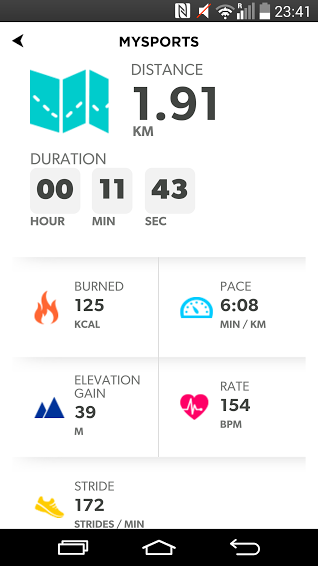Last year we tried out the TomTom Runner, it got a thumbs up but had a few niggles. The new TomT om Multi-Sport Cardio promises to iron these out. Here’s what happened when we put it to the test.
What: TomTom Multi-Sport Cardio
Cost: rrp £249.99
‘Which watch?’ is one of the most common questions I’m asked. My selection criteria include: simplicity, looks, speedy satellite syncing, long battery life and sexy data visuals. So does the TomTom Cardio make the cut and what are the extras?
Simplicity
I struggle switching on the tele and my iMac serves as a giant Spotify player so simplicity is my top priority. I like a watch which is intuitive, one I can figure out by continually pressing all the buttons rather than reading the instructions. The TomTom watch is just the thing – simple but with loads of functionality that you can use for running, cycling and swimming.
There is one big navigation button which takes you through all of the menus. Right to start running, cycling, swimming, left to check the battery and down for settings – you get the idea, it’s pretty easy to use. Some of the issues we had with the old TomTom Runner have also been tweaked which makes things simpler. The pause and stop function (a press on the left hand side of the big navigation button) now requires a press and hold to stop you from accidentally stopping the whole run and having to start a new run and add them all together at the end. Bloody good listeners at TomTom – we like that!
Looks and Display
It’s not a bad looking bit of kit but I’m not that keen on the standard red and white strap. Fortunately you can buy new straps –a plain black strap definitely looks much slicker. It’s also a lot bulkier than the TomTom Runner – it’s fine but it is one you’d pop on pre-training rather than something you’d keep on for the day.
I like the display. You can see three different metrics while you’re training – one big one and two smaller ones along the top. I always opt for pace (or speed if cycling) as the big one and time elapsed and distance travelled for the smaller ones. For data geeks out there other watches offer more customisation but I like the simplicity of this. While I’m racing I just want to know the basics – I can always sit and pick apart the rest of it over a cup of tea post-race.
Battery Life
Battery life is ok. TomTom tells us that you get up to 8 hours battery life but I’m not convinced. Any cycling of 6+ hours seemed to result in sports watch death. This is also a bit less than the original TomTom Multisport which was up to 10 hours. The heart rate monitor seems to drain the battery so I’m going to try switching it off for longer rides – I’ll update you on the verdict.
Syncing Speed
The first time I used it I was very impressed how quickly it picked up a satellite, but it seems to slow up each time I use it. There were a few tense pre-race moments where no matter how still I was or how much I waved my arm in the air willing it to find signal it just wouldn’t – not helpful for pre-race nerves! This was something we flagged with the TomTom Runner. TomTom tells us that the watch needs to be synced with your computer every three or four days to make sure it’s got the latest satellite info. Despite doing this there were still days when it was a bit slow to sync. Likewise when swimming, the watch will count your laps as well as distance, strokes time and SWOLF* but sometimes I noticed it was on the same lap number for three lengths or more and then would suddenly catch up with itself, which may well mean I wasn’t pushing off hard enough (as that’s how the watch tracks lengths) but whatever, it was pretty annoying.
*SWOLF – a swim efficiency score based on the amount of strokes you take per length. A combination of the words swimming and golf, the lower your SWOLF score, the better.
Training Data
Runs, cycles and swims can be stored on the watch, online and on the app. When you’re uploading data to your computer the watch will sync with TomTom’s own online platform. It’s nice to look at and give you lots of easy to understand metrics. The app’s really nifty – it syncs with the watch using bluetooth which mean you can check out your performance the minute you get over the finish line.

The Extras
The main added extra compared to the TomTom Runner, the old Multisport and most other watches on the market is the heart rate sensor (although this doesn’t work when you’re swimming). This means you can train in specific heart rate zones and the watch will keep you in check. For most other watches you can buy separate heart rate sensor straps to put round your chest. I haven’t trained using heart rate before because I can’t be arsed with a sweaty uncomfortable strap. Rather than detecting electrical impulses like a strap it uses technology from Mio which is included within the watch itself. Two green LEDs reflect onto your wrist and a sensor checks the colour of your skin. When your heart pumps, your skin changes colour, and the sensor can use this to calculate heart rate. Way over our heads but nifty all the same!
My Verdict
An easy-to-use multisport watch, intuitive enough even for the most technologically challenged. The real selling point is the heart rate monitor which can tell how fast your heart is beating based on the colour of your skin. All it needs is a strap change to make it a little less garish.
Find out more here sports.tomtom.com






